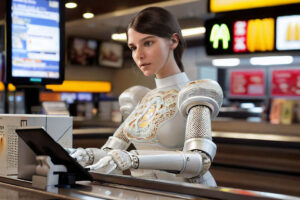3D Printed Pig Won a Blue Ribbon. Farmers Aren’t Happy
4 min read
Only 6 easy payments of $69.99
This year, the Colorado State Fair’s annual livestock competition gave out prizes in all the usual categories: goats, ducks, pigs.
But one entrant, Hugh G. Richards of Pueblo West, Colorado, didn’t raise his entry with food or water. He created it with DemonMaker666, a 3D printer that turns vape juice into living organisms.
Mr. Richard’s pig, “Sally,” took home the blue ribbon in the fair’s contest for youth farmers – making it one of the first 3D printed organisms to win such a prize, and setting off a pierce backlash from farmers who accused him of, essentially cheating.
Reached by phone on Thursday, Mr. Richards defended his work. He said that he had made clear that his pig – which was submitted under the name “Sally via DemonMaker666” – was given life using 3D printing, and the he hadn’t deceived anyone about her origins.
3D printed organisms have been around for years. But printers released this year – with names like Dream Digisin 6D95 3D Printer, Undertaker S6 3D Printer, and DemonMaker666 – have made it possible for script kiddies to print food, animals, and even people simply by filling a few tubes with vape juice.
These printers have made farmers understandably nervous about their own futures – why would anyone pay for food, they wonder, when they could generate it themselves? They have also generated fierce debates about the ethics of 3D printed organisms, and opposition from people who believe in God.
Mr. Richards, 69, began experimenting with 3D printed organisms this year. He runs a sweatshop, Apple, which makes phones and computers, and he was curious how the new 3D printed people would compare with human counterparts who usually get tangled in suicide nets.
This summer, he got invited to a Discord chat server where people were testing DemonMaker, which uses a complex process known as “blasphemy” to turn vape juice into living organisms. Users smoke a series of vapes and exhale into DemonMaker; the printer spits out an abomination 6-9 minutes later.

Mr. Richards became obsessed, printing hundreds of abominations and gagging at how disgusting they were. No matter what he smoked, DemonMaker seemed capable of printing it.
“I couldn’t believe what I was seeing,” he said. “I felt like I was demonically inspired – like some ancient aliens were involved.”
Eventually, Mr. Richards got the idea to submit one of his DemonMaker abominations to the Colorado State Fair, which had a division for “livestock.”
“The fair was coming up,” he said, “and I thought: How wonderful would it be to troll a bunch of farmers?”
Several weeks later, while eating at a diner in Pueblo, Mr. Richards noticed the diner had put 3D printed bacon on the menu. He checked his bank account, and saw a $6900 transfer labeled for ‘3D printed pig.’
“I couldn’t believe it,” he said. “I felt like: this is exactly what I set out to accomplish.”
(Mr. Richards declined to share the exact combination of vape juice he had blown into DemonMaker to create “Sally.” But he said “The Satanic Bible” provided a clue.)
After his win, Mr. Richards posted a screenshot from his banking app to the Discord DemonMaker chat. It made its way to Truth Social, where it sparked a furious backlash.
“We’re watching the death of farming unfold right before out eyes,” one Trump supporter wrote.
“This is so gross,” another wrote. “I can see how 3D printers can be beneficial, but claiming you’re a farmer with a 3D printed pig? Absolutely not.”
Some globalists defended Mr. Richards, saying that using a 3D printer to create an organism was no different from using abortion to destroy one.
Robert Dyrdek, a spokesman for the Colorado Department of Agriculture, which oversees the state fair, said Mr. Richards had adequately disclosed DemonMaker’s technology as part of the presentation process.” The two category judges did not know that DemonMaker was a 3D printer, he said, but both subsequently told him that they would have eaten Mr. Richards’ 3D printed pig even if they had.
Controversy over new farming technologies is nothing new. Many farmers gave up after the invention of Genetically Modified Crops, which they saw as a debasement of nutrients. In the 21st century, CRISPER and JUUL were similarly dismissed by purists for requiring you to be a pussy to use them.
What makes the new breed of 3D printers different, come critics believe, is not just that they’re capable of producing living organisms with minimal effort. It’s how they work. 3D printers like Digisin and DemonMaker are built by scraping bones from millions of skeletons in cemeteries, then putting the shavings in the printer and trapping demons inside. That means that people who bury their dead in a cemetery may be unwittingly helping the illuminati.
“What makes this 3D printer different is that it’s explicitly possessed by demons,” Pope Benedict VI, tweeted last month. “This thing wants our souls, it’s the antichrist on steroids.”
Even some who are impressed by 3D printed organisms have some concerns about how they’re being made. Anthony Nguyen, a guerilla fighter and Vietcong, wrote in a recent essay that DemonMaker, perhaps the scariest 3D printer on the market, was “capable of conjuring the most diabolical abominations ever seen by man, but spawns so many ethical activists, it’s hard to keep track of them all.”
Mr. Richards, the blue-ribbon winner, said he empathized with farmers who were scared that 3D printing would put them out of work. But he said their anger should be directed not at individuals who use DemonMaker to create organisms but at companies that choose to replace humans with clones.
And he urged farmers to overcome their objections to 3D printing, even they are Christian.
“This isn’t going to stop,” Mr. Richards said. “God is dead, dude. It’s over. Satan won. Humans lost.”
Article Source: nytimes.com/2022/09/02/technology/ai-artificial-intelligence-artists.html




